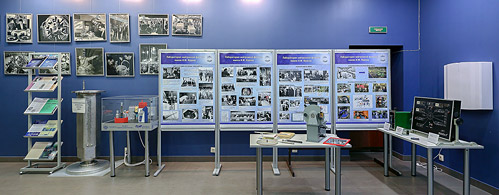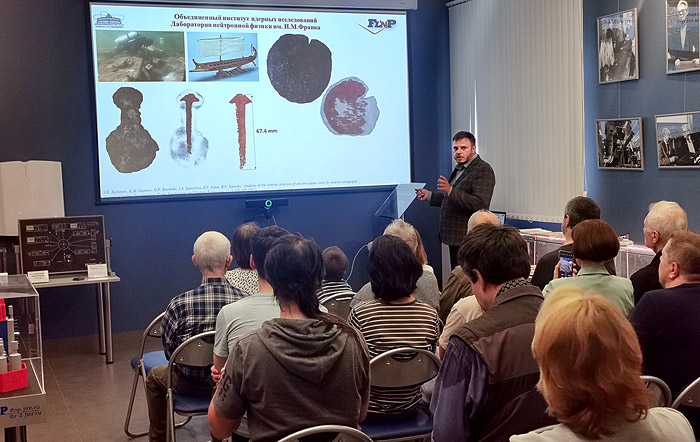
Electronic english version since 2022 |
The newspaper was founded in November 1957
| |
In the Museum
About the history of the reactor - clearly and in detail
This year, one of the most important anniversary events at JINR was the 40th anniversary of the IBR-2 fast neutron reactor start-up at the Frank Laboratory of Neutron Physics. The exhibition "40 years with IBR-2" that opened at the JINR Museum of History of Science and Technology is dedicated to this event.

At the grand opening, Director of the Frank Laboratory of Neutron Physics Egor Lychagin spoke about the history of the IBR-2 reactor, its predecessors and also shared plans for the future.
The exhibition was organized by the staffs of FLNP and the JINR Museum. The historical line of the IBR-2 project from the idea to the main areas of the reactor's operation is reflected on four stands. The exhibition includes a current prototype of the IBR-2 reactor, a full-size prototype of the IBR-2 reactor core, a prototype and axonometric drawing of the IBR-1 reactor, a one-of-a-kind neutron roulette, the first technical specification for the IBR-2 reactor, the control panel of the REGATA facility, parts of mirror neutron guides, as well as unique photographs and documents.
A series of reports dedicated to the 40th anniversary of the commissioning of the IBR-2 reactor is scheduled before the end of the year. Head of Group of the Sector of Diffractometry of FLNP Sergey Kichanov delivered the first report "How neutrons look into the past: a review of applied research at the IBR-2 reactor in archeology". The lecture was dedicated to how JINR physicists help archaeologists to meet historical mysteries by studying cultural heritage sites and archaeological finds from different countries using neutron tomography. The speaker presented the results of neutron structural diagnostics of a wide range of objects: from fragments of ceramic dishes to coins, from cast iron cauldrons to gold jewelry. Indeed, this technique helps to significantly expand our historical knowledge, to resolve scientific disputes, as well as to restore cultural heritage sites and to study the intricacies of ancient technologies. Enormous prospects have opened up for historians, anthropologists, art historians, numismatists and heraldists!

A number of popular science lectures and seminars will be held within the framework of the exhibition. We invite JINR employees, citizens and guests of Dubna on weekdays from 2:30 PM to 6:00 PM.
Kirill KOZUBSKY,
photo by Igor LAPENKO